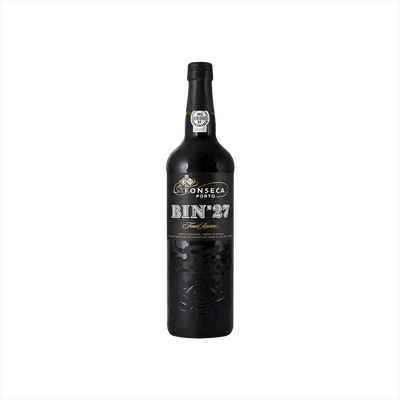Ruby Port
What is Ruby Port?
Ruby Port is a vibrant, fruit-forward style of Port Wine that gets its name from its deep, jewel-toned color. Unlike aged tawny ports that mellow in wooden barrels for decades, Ruby Ports spend minimal time in wood and are bottled young to preserve their bold, fresh grape flavors and that signature ruby hue. This approach keeps the wine's natural fruit intensity intact, delivering rich notes of blackberry, cherry, and plum with a full-bodied sweetness that makes it perfect for sipping after dinner or pairing with chocolate desserts.
Learn More About Ruby Port
What makes Ruby Port unique?
Ruby Port stands apart from other Port styles through its youthful vibrancy and deliberate simplicity—while Tawny Port spends years aging in small oak barrels that mellow and oxidize the wine into nutty, caramel complexity, Ruby Port is aged briefly in large neutral vessels that preserve its fresh, fruity character. This shorter aging process keeps Ruby Port's deep red color intact and maintains those bright flavors of blackberry, plum, and dark cherry that make it such a crowd-pleaser. Unlike the sophisticated, contemplative nature of Vintage Port or the refined elegance of aged Tawnies, Ruby Port offers immediate gratification with its approachable sweetness and bold fruit-forward personality.
How is Ruby Port made?
Ruby Port starts its life like any other wine, with grapes fermented in large tanks or traditional stone lagares where workers still stomp the fruit by foot. The magic happens when distillers add grape brandy (aguardente) partway through fermentation, which stops the process and leaves behind natural residual sugar while boosting the alcohol content to around 20%. The young wine then ages in large wooden vats or concrete tanks for two to three years, maintaining its vibrant ruby color and fresh, fruity character before being blended and bottled.
How do you drink Ruby Port?
Ruby Port shines brightest when served neat at cellar temperature (around 60-65°F) in a proper port glass, allowing its rich fruit flavors and warming alcohol to unfold naturally on your palate. While purists prefer it straight, Ruby Port makes an excellent base for winter cocktails like mulled wine variations, port and tonic serves, or classic combinations with aged spirits in Manhattan-style drinks. The sweet, fortified wine's robust character makes it perfect for cool weather sipping—think fireside evenings, holiday gatherings, or as a digestif after hearty autumn and winter meals when you want something that feels both festive and comforting.
How do I choose good Ruby Port?
When selecting a Ruby Port, look for producers like Graham's, Cockburn's, or Fonseca, and check that the bottle shows a recent bottling date since Ruby Port doesn't improve with age once bottled. For sipping neat, go with a premium Ruby or Late Bottled Vintage for more complexity, but if you're mixing cocktails like a Port and Tonic or using it in cooking, a standard Ruby Port offers great value and the right fruit-forward punch without breaking the bank. The key is matching the intensity—richer, more expensive bottles shine on their own, while simpler expressions work beautifully when other ingredients share the spotlight.
Nutritional Information
Typical Calorie Range per Ounce: 40-50 calories
Typical Carbohydrate Range per Ounce: 4-6 grams
Typical Sugar Range per Ounce: 4-6 grams
Typically Gluten Free: Yes
Ruby Port is made from grapes and follows traditional winemaking processes, making it naturally gluten-free. The higher calorie and sugar content comes from the fortification process, where grape spirits are added during fermentation to stop the process early, preserving natural grape sugars. This creates Port's characteristic sweetness and higher alcohol content compared to regular wines.
Note: While Port is typically gluten-free, always check the specific product label and manufacturer information to confirm gluten-free status, especially if you have celiac disease or severe gluten sensitivity.
Scrolled this far? Your reward? Ruby Port Trivia!
- Ruby Port gets its deep crimson color from a sneaky winemaking trick called "pumping over" – winemakers literally pump the fermenting juice over the grape skins up to four times per day, extracting maximum color and tannins. This aggressive extraction process would destroy most wines, but Port's high alcohol content from fortification actually preserves all that intense pigment.
- The famous Port lodges in Vila Nova de Gaia aren't just for show – they're positioned on the south bank of the Douro River specifically because the cooler, more humid conditions there slow down the aging process. Ruby Port ages much faster in the hot Douro Valley where it's made, so producers ship it across the river to essentially put it in "slow motion" aging mode.
- Ruby Port contains more antioxidants than red wine, dark chocolate, or green tea. The fortification process that stops fermentation actually preserves more of the grape's original antioxidant compounds, particularly anthocyanins and resveratrol. Some Ruby Ports contain up to ten times the antioxidant levels found in regular red wines.
- Traditional Ruby Port is never filtered, which means every bottle contains microscopic grape particles that continue to evolve the flavor profile years after bottling. Those tiny sediments act like flavor time capsules, slowly releasing compounds that can make a five-year-old Ruby Port taste completely different from when you first opened it.
- Ruby Port was accidentally invented in 1678 when British merchants added brandy to Portuguese wine barrels to prevent spoilage during shipping. The alcohol stopped fermentation mid-process, leaving residual sugar and creating the sweet, fortified wine we know today. What started as a preservation hack became one of the world's most beloved dessert wines.
Higher-proof spirits can be intense. Mix carefully, taste thoughtfully, and enjoy responsibly.
Gift message (optional)

